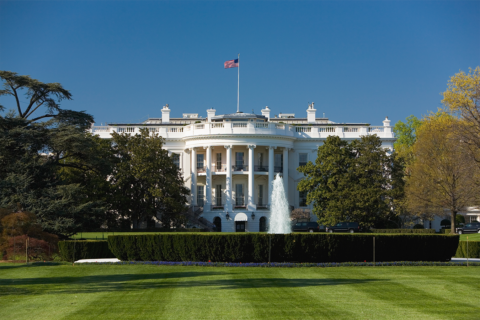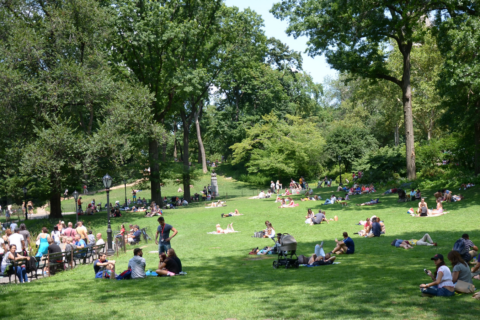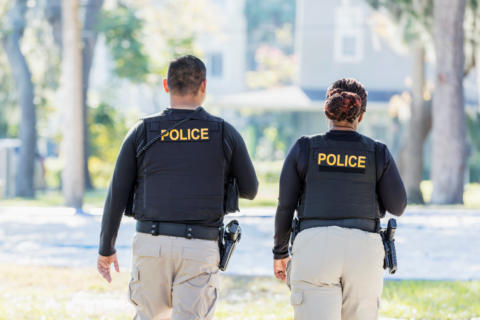Written in collaboration with Courtney Scott (Assistant Chief Administrative Officer, Baton Rouge) and Martese Coker-Clark (Chief of Staff, CJPS Philadelphia).
Each year, Gun Violence Awareness Day falls on the first Friday in June. Also known as Wear Orange Day, this day honors victims and survivors of gun violence. It originated June 2, 2015, on what would have been the 18th birthday of Hadiya Pendleton, who was shot and killed in Chicago in 2013—just a week after she performed at President Barack Obama’s second inauguration.
A single act of violence—such as Pendleton’s murder in 2013—can deeply impact everyone involved including the perpetrator, the victim, witnesses, family members and others. In areas where violence is heavily concentrated, a collective, shared trauma among residents can result in hyper-vigilance, hopelessness and other after effects that often are unseen. Traditional responses to violent tragedies from city departments do not often address root causes, nor do local governments have the capacity to support trauma recovery for impacted communities.
However, successful models that disrupt violence and work to heal people do exist. Community violence intervention (CVI) programs have been around for decades. Due to federal amplification and investment, funding and opportunities for CVI have expanded drastically since 2020. These community-centered interventions bring hope to residents dealing with violence, provide safe/trusted resources for those engaged in violent activity and can change the trajectory of a neighborhood (and in turn, a city). To learn more about the types of CVI programs and the cities that implement them, read about the CVI Ecosystem.
Community violence intervention (CVI) takes a healing, public-health approach to interrupt community violence, seeing it as akin to an infectious disease. While there are many CVI models, each one relies on community members who are relatable and who understand the problem firsthand, to intervene in high-risk situations to de-escalate conflicts, and in some cases connect people with services such as mental health counseling, housing, and job training.
Cities across the country, like Baltimore and Newark for example, are seeing the results of comprehensive approaches to violence that include trauma informed efforts and CVI (with specific and intentional collaboration and co-creation with Black and brown residents). Below, highlights from two cities reinforce the need to address violence and its related trauma through community-centered interventions as part of a comprehensive strategy paired with the support of municipal leaders.
Safe, Hopeful, Healthy Baton Rouge
Through her Safe, Hopeful, Healthy Baton Rouge (SHHBR) initiative, Mayor-President Sharon Weston-Broome of Baton Rouge, Louisiana, is a proponent of comprehensive approaches to crime and violence — inclusive of solutions that center CVI programs. The program’s 2022 Impact Report along with safety outcomes from January through March 2023 show that through community centered approaches (alongside smart policing), reductions in both homicides and non-fatal incidents are possible. SHHBR has four key elements:
- Empower safe and healthy individuals, youth, families and community
- Build and revitalize safe and hopeful neighborhoods
- Foster a healthy and hopeful culture of peace
- Build infrastructure for healing informed policies, practices and systems
Along with the initiative’s four key elements, SHHBR has additional support. The program is driven by several programs and initiatives including:
The Baton Rouge Community Street Team. BRCST draws upon an evidence-based, trauma informed approach to violence reduction. BRCST hires, trains and deploys Outreach Workers and High-Risk Interventionists in two Baton Rouge ZIP codes.
The School Outreach Dream Academy. The Academy encompasses several school-based initiatives to support young people and ensure that they are safe. In-classroom support, mentorship, mental health services and safe passage are all components of the initiative.
The Summer of Hope. A community-led initiative focused on peace, joy and opportunity. Through collective impact strategies, the city leverages community organizations and events to bring hope directly to neighborhoods impacted by violence.
SHHBR led to a 22 percent reduction in homicides in 2022, and in the first quarter of 2023, a 44 percent reduction in homicides—numbers that quantify what can happen when holistic responses and supports are in place. Through ongoing investment, including from the Coalition to Advance Public Safety, Baton Rouge hopes to continue on the trajectory toward citywide violence reduction and trauma recovery.
A Roadmap to Safer Communities in Philadelphia, Pennsylvania
Philadelphia Mayor Jim Kenney recognizes the importance of treating violence-inflicted trauma and invests in a variety of initiatives and programs, guided by the Roadmap to Safer Communities. Significant investments have been made to build capacity around Philadelphia’s violence intervention landscape yielding tangible outcomes and laying the foundation for a cohesive, citywide strategy to reduce and prevent violence and trauma.
In their 2023 report, the initial signs of what the city hopes will show a return on their investment are apparent ($209 million in fiscal year 2023 and a proposed $233 million investment in fiscal year 2024). Most of the work lives in the city’s Office of Policy and Strategic Initiatives for Criminal Justice and Public Safety that houses the Office of Violence Prevention, Office of Reentry Partnerships, Office of the Victim Advocate, and more. Highlights from that report include investments in:
- The Hospital-Based Violence Intervention Program (HVIP) Collaborative. HVIP brings together medical staff and community partners that provide trauma-informed, wrap-around care for patients who have suffered a violent injury.
- The Philadelphia Violence Prevention Hotline (211). This is a 24/7 voice or text hotline that connects Philadelphians who have been impacted by gun violence to a wide range of resources and support.
- The Community Crisis Intervention Program (CCIP). CCIP uses the credible messenger model to prevent and reduce gun violence. The program hired a new Director and expanded to include two additional community-based organizational partners.
- The Group Violence Intervention (GVI) Program. GVI connects individuals and neighborhood groups directly connected to gun violence to wraparound supports through a referral-based system (research shows on average, gun violence associated with a group dropped by 38.6 percent after one interaction with the GVI team).
- The Office of the Victim Advocate. Launched in 2022, this office supports victims of gun violence and their loved ones through advocacy, connections to resources and more.
Philadelphia also has more on the horizon. In addition to ensuring those working to disrupt and prevent violence in the city have their own mental health support, in the summer of 2023, the city will launch a new CVI program, “Pushing Progress Philly,” which is modeled after the Heartland Alliance READI National Center for Safe Communities. Also, through NLC’s Municipalities Reimagining Community Safety Initiative, Philadelphia is building out a training academy for credible messengers and intervention workers to align various programs across the city as they address trauma and violence.
To best prevent and interrupt gun violence and heal the trauma that it causes, cities must look to comprehensive strategies that uplift community-based solutions and public health approaches. Models like those in Philadelphia and Baton Rouge can provide a framework to those looking for a starting point or for their next step. While it could be tempting to look for quick fixes or revert back to traditional responses, cities, towns and villages are leaning into longer term investments that build capacity in community to address violence and trauma holistically.








